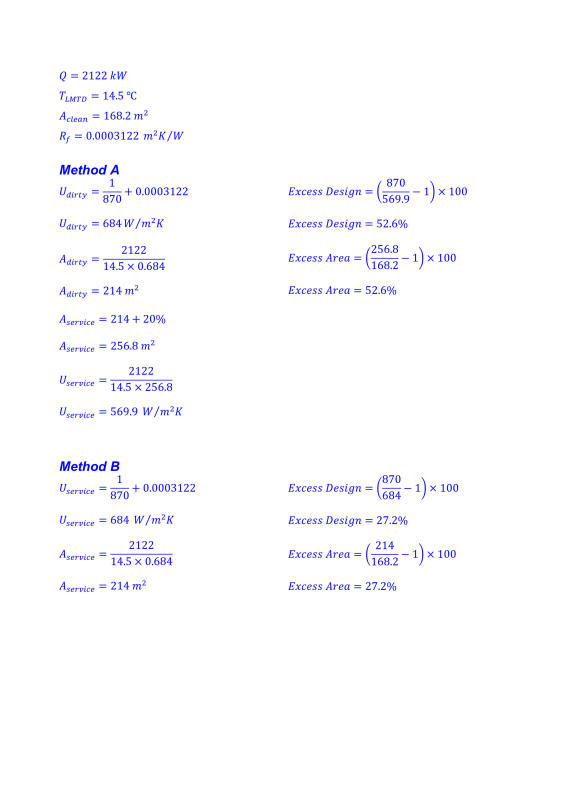takiyasamsama
Chemical
- Feb 10, 2015
- 108
Hello,
I need to reconfirm with those that have experience with the said issue. I'm in a never ending argument on the following issue in determining the overall heat transfer coefficient in different condition.
One party says that U_dirty is actually U_service and another party says that it is not. I have attached sample calculation with two methods, one method with U_dirty and U_service calculated differently and another method is U_dirty and U_service is consider the same.
When it comes to excess design, one party stands by saying adding extra area on dirty area is not going to be efficient since it's just an exchanger working under dirty condition while other party saying that extra area over the dirty area will cause the unit to not work effectively and will cause greater margin on the excess area.
All helping hands is greatly appreciated and thank you is in advance

I need to reconfirm with those that have experience with the said issue. I'm in a never ending argument on the following issue in determining the overall heat transfer coefficient in different condition.
One party says that U_dirty is actually U_service and another party says that it is not. I have attached sample calculation with two methods, one method with U_dirty and U_service calculated differently and another method is U_dirty and U_service is consider the same.
When it comes to excess design, one party stands by saying adding extra area on dirty area is not going to be efficient since it's just an exchanger working under dirty condition while other party saying that extra area over the dirty area will cause the unit to not work effectively and will cause greater margin on the excess area.
All helping hands is greatly appreciated and thank you is in advance

